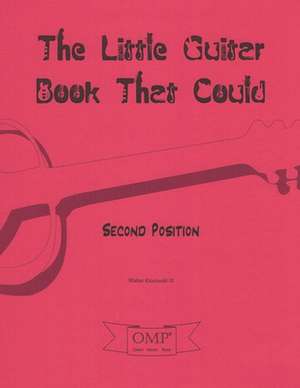The Little Guitar Book That Could
Editat de Walter H Klosowskien Limba Engleză Paperback – 25 noi 2017
Preț: 104.74 lei
Nou
Puncte Express: 157
Preț estimativ în valută:
20.04€ • 20.71$ • 16.68£
20.04€ • 20.71$ • 16.68£
Carte tipărită la comandă
Livrare economică 26 martie-09 aprilie
Preluare comenzi: 021 569.72.76
Specificații
ISBN-13: 9780692988763
ISBN-10: 0692988769
Pagini: 146
Dimensiuni: 216 x 279 x 8 mm
Greutate: 0.35 kg
Editura: LIGHTNING SOURCE INC
ISBN-10: 0692988769
Pagini: 146
Dimensiuni: 216 x 279 x 8 mm
Greutate: 0.35 kg
Editura: LIGHTNING SOURCE INC
Notă biografică
Meet the author Walter Klosowski "Kapowski"! In addition to writing books like this, Mr. "Kapowski" is a professional guitarist, composer and public school music educator. He holds a Master's degree in Music Theory on scholarship with emphasis on classical guitar as well as a Bachelor's degree in Music Theory/Composition and Guitar Performance. He is also the recipient of the Piano Guild USA Sonatina Award as well as three NSFM piano federation competition pins. This book, THE LITTLE GUITAR BOOK THAT COULD, formally introduces and explains the C A G E D shapes and how each fits into the SECOND POSITION. The material is presented in a special way as to provide technical clarity and practicality to an all too often obscured subject area, that of the inner workings of the guitar fretboard. Having worked in the print music industry for over ten years, the series was authored by "Kapowski" in direct response to the lack of printed scholarly materials that focus only on the guitar positions and position work, all of which is especially evident at the onset of instruction. Compared to other members of the string instrument family, such as the violin, viola, cello and bass, there is no real technical standard in place that guitarists readily go to for position work. THE LITTLE GUITAR BOOK THAT COULD for the SECOND POSITION is one technical reference that checkmates this situation, and is very practical to use no matter what one's technical level. Enjoy!
